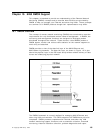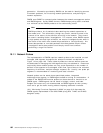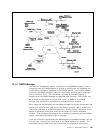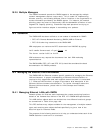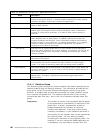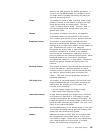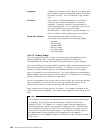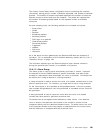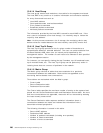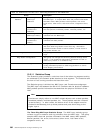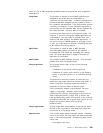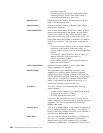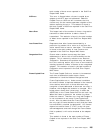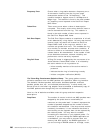The History Control table stores configuration entries containing the interface
information, polling period, number of buckets requested, and number of buckets
granted. The number of buckets requested represents the number of times the
operator wants to collect and store the samples. The probe will respond with
the number of buckets granted based on the requests as well as available
resources.
At each sampling cycle, the following statistics are collected and stored:
•
Drop events
•
Octets
•
Packets
•
Broadcast packets
•
Multicast packets
•
CRC align error packets
•
Undersized packets
•
Oversized packets
•
Fragments
•
Jabbers
•
Collisions
•
Utilization
All of the above are also gathered by the Statistics MIB with the exception of
utilization. For an explanation of the individual statistics, please refer to 10.4.1.1,
“Statistics Group” on page 196.
The utilization statistics give the Ethernet physical layer network utilization
during the specified time interval, in hundredths of a percent.
10.4.1.3 Alarm Group
The Alarm group is used to track extraordinary activities or events. It permits
the operator to set the RMON alarms to specific thresholds, and when traffic
exceeds or drops below those thresholds, an event is activated. Thresholds can
be defined as a rising threshold or a falling threshold.
A rising threshold is used to monitor the value of a tracked variable when it rises
above a particular level. For instance, you might want to set a rising threshold
for the occurrences of error packets at 200 packets/second. If the error packet
rate exceeds 200 packets/sec, the rising threshold is exceeded and an event will
be generated.
A falling threshold is used to report an event when the value of a tracked
variable has fallen below a particular threshold level.
Thresholds can be set against either absolute or delta values. If an absolute
value is chosen, the absolute value stored in the variable′s counter will be
compared directly with the absolute threshold value. For delta values, the value
of the selected variable at the last sample is subtracted from the current value,
and the difference is compared with the threshold value.
Chapter 10. 8260 RMON Support 199



